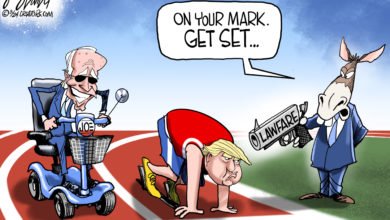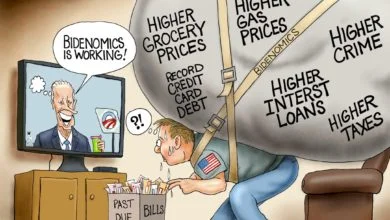UAW Deal Cements Wage-Price Spiral
With a 7% annual labor cost increase in each of the next four years, the wage-price spiral is now embedded in our economy.
As noted in a prior column, the country has started to experience the beginning of the dreaded wage-price spiral. This one, like the last one in the 1970s, started with rising energy prices and excess demand caused by poor government policy. With the recent UAW settlements, we are now embedded in the wage-price spiral.
Recall, the wage-price spiral happens when labor starts seeking abnormally high wage increases. This occurs in an inflationary environment where inflation psychology has become the norm. Companies, workers and even the public accept these high wage demands because prices have risen significantly.
“If inflation is running at 5% or so, we need a 6% or 7% wage increase just to stay ahead,” the average worker may say. That seems reasonable to most people, so they support workers taking action to raise their wages. Even the companies whose nominal profits have increased significantly because of inflation believe the workers should get a large raise.
Then, once other workers see that organized labor is getting high wage increases, they say that it is reasonable for them to get as much or even more than those workers. Soon all wages rise. That leads to much higher labor costs for business who must, to maintain profitability, raise their product prices.
That leads to even higher prices and more inflation. The next time workers seek a wage increase it will have to exceed their prior increase because prices are higher. This is a wage-price spiral.
The United Auto Workers appear to have reached a settlement with Ford and Stellantis (Chrysler plus). While the details of the deal are not fully public, it looks like the bonus, annual wage increases and changes in benefits and working conditions will increase the annual labor cost to the car companies by about 7% per year for the next four years.
There are other instances where annual labor costs increase by at least that much. Kaiser Permanente workers got a 7% wage increase annually for the next four years. In June, Bloomberg reported average negotiated wage increases reached 7% this year. That’s the largest wage increase since Bloomberg began tracking this in 1988.
It looks like 7% will be the number that workers seek when asking for their annual raise. This 7% figure may stay with us for some time since these larger organized labor contracts last for four years.
It was both poor Fiscal Policy and shockingly irresponsible Monetary Policy that caused the inflation. Excess money supply growth in 2021 and the first half of 2022 coupled with near zero interest rates added significant excess demand. Add in the $9 trillion of deficit spending in the last four years and we have huge excess demand. In addition, government policy was the primary contributor to the price of energy doubling.
Holding the always fluctuating food and energy prices constant, the (core) inflation rate has been hovering around 4%. If that continues and we add in the anticipated wage inflation, there is a potential for higher and very stubborn inflation.
The tough variable to predict is energy prices. Energy demand remains soft as economies worldwide are seeing less economic activity. China is having a tough time re-starting its economy from the complete COVID shutdown at the end of last year. The low demand should keep prices down.
However the supply is very uncertain due to geo-political events. If global conflicts reduce the supply, energy prices could rise significantly. That means even more inflation. And higher wage demands going forward.
The labor settlement of the UAW really cements the wage-price spiral. While others received similar wage increases, the UAW has a lot of impact on other workers’ demands both organized and not.
At this point, there is little that can be done to stop this nasty spiral. The first step though, is to continue to keep inflation reduction as the top economic priority. That means dramatically reducing government spending to reduce the deficit, as soon as possible.
It also means the Federal Reserve must become more aggressive. Even though interest rates have increased drastically since the zero rate in 2022, the rates are still too low. The purpose of the high rates is to reduce excess demand.
Since GDP grew at nearly 5% last quarter, and inflation is running at nearly 4%, there is still excess demand that must be eliminated to reduce inflation and begin to find a way out of this dreaded wage-price spiral.
Agree/Disagree with the author(s)? Let them know in the comments below and be heard by 10’s of thousands of CDN readers each day!




